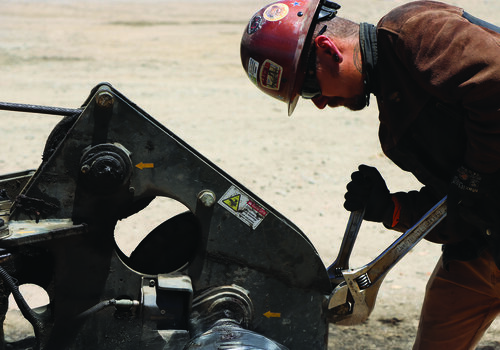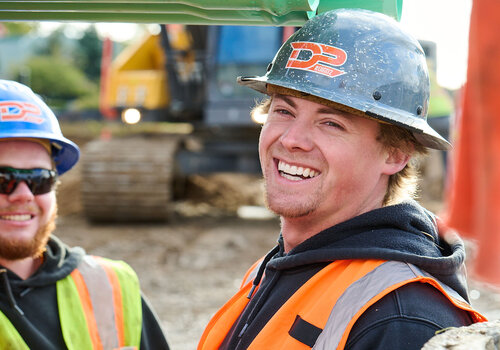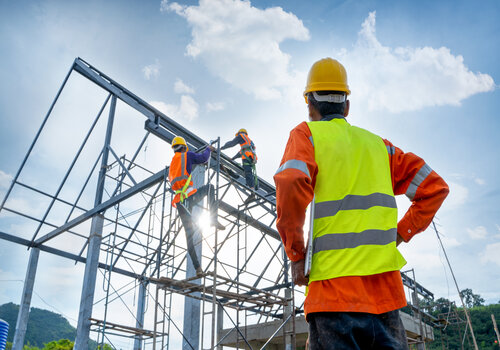The history of women in construction reflects a gradual but persistent evolution, marked by the impact of historical events and changing societal norms and stereotypes. Historically, women were largely excluded from the professional construction industry, perceived as incompatible with the physical demands of the job. Yet, over the years, women have proven their capability, resilience and leadership, and they’ve left their mark on some of the most notable construction projects of the past century.
WOMEN IN CONSTRUCTION: A BRIEF HISTORY
Archeological signs point to evidence of women working as manual laborers and builders in Medieval Europe, but they were often left off official records (if they existed in the first place) and were unpaid for their work. Skilled and unskilled work, especially that tied to trade guilds and apprenticeships, was limited to men for hundreds of years.
With the Industrial Revolutions in the 18th and 19th centuries, the labor markets began to expand based on demand, and women began to enter the paid workforce. It was World War II when an entire generation of women filled many of the United States’ construction, mechanical and technical jobs, while many men served overseas in the military. When the war ended, men largely returned to those roles, but some women stayed on in the field or fought for opportunities and education based on their time in factories and on jobsites.
The remainder of the 20th century saw a gradual increase in the number of women entering construction, particularly in managerial and administrative roles. Legal changes, affirmative action, and advocacy further facilitated women's integration into various construction trades and expanded the opportunity for women to take on more leadership as engineers, architects, contractors and business owners.
SLOW, STEADY PROGRESS
Despite significant progress, women accounted for just over 10% of those employed in the construction industry in 2020. Efforts to encourage diversity and inclusion have gained momentum in recent years, with initiatives promoting mentorship, education and breaking down stereotypes. That is evidenced by the fact that women’s job growth in the construction trades outpaced their overall job growth by more than 20% between 2017 and 2018. So, while construction overall remains a male-dominated industry, efforts to promote opportunities for women throughout the construction field are seeing success.
The National Association of Women in Construction (NAWIC), along with its 115 chapters across the country, sponsors Women in Construction Week each year. WIC Week is March 3-9, 2024, and will include events under this year’s theme: Keys to the Future, which celebrates the strength and knowledge of women and the vital role they play in shaping the future of the construction industry.
5 NOTABLE WOMEN IN CONSTRUCTION IN THE 20TH CENTURY
Here’s a closer look at five women who made their mark on the construction industry in the 20th century, inspiring and paving the way for those entering the field today.
Lillian Gilbreth
Dubbed the “mother of modern management,” Gilbreth, along with her husband, Frank, combined their knowledge of construction and industry management and psychology to detail productivity and efficiency practices. She was the first woman to be named a professor of engineering at Purdue University, and she was only the second woman to join the American Society of Mechanical Engineers. The image accompanying this article is of the Women's Policy Committee of the War Manpower Commission with Dr. Lillian M. Gilbreth standing to the far left.
Julia Morgan
Morgan was the first woman to receive an architectural license in the state of California. She designed more than 700 buildings, but she’s best known for overseeing the design and construction of Hearst Castle in San Simeon, California.
Frances Perkins
The first woman to hold a cabinet position, Perkins was appointed the Secretary of the Department of Labor in 1933 – she held the position for 12 years. She worked with President Franklin D. Roosevelt to implement a number of New Deal programs that increased vital construction projects following the Great Depression and that have impacted workers in the industry ever since, including Social Security, the Fair Labor Standards Act and the national minimum wage.
Elsie Eaves
Eaves was the first woman to be a full member of the American Society of Civil Engineers in 1927. After receiving her degree in civil engineering, she joined the Engineering and News-Record, where she analyzed market surveys and data as the manager of the Construction Economics department. Her work was used to help determine which projects could move forward quickly and economically in the recovery effort following the end of World War II.
Barbara A. Res
Known as the “woman who built Trump Tower,” Res oversaw the construction of that famous NYC skyscraper, along with other projects, including renovations of the Plaza Hotel. She wrote a memoir about her experiences in the engineering and construction fields titled “All Alone on the 68th Floor: How One Woman Changed the Face of Construction.”
Photo credit: George Danor












